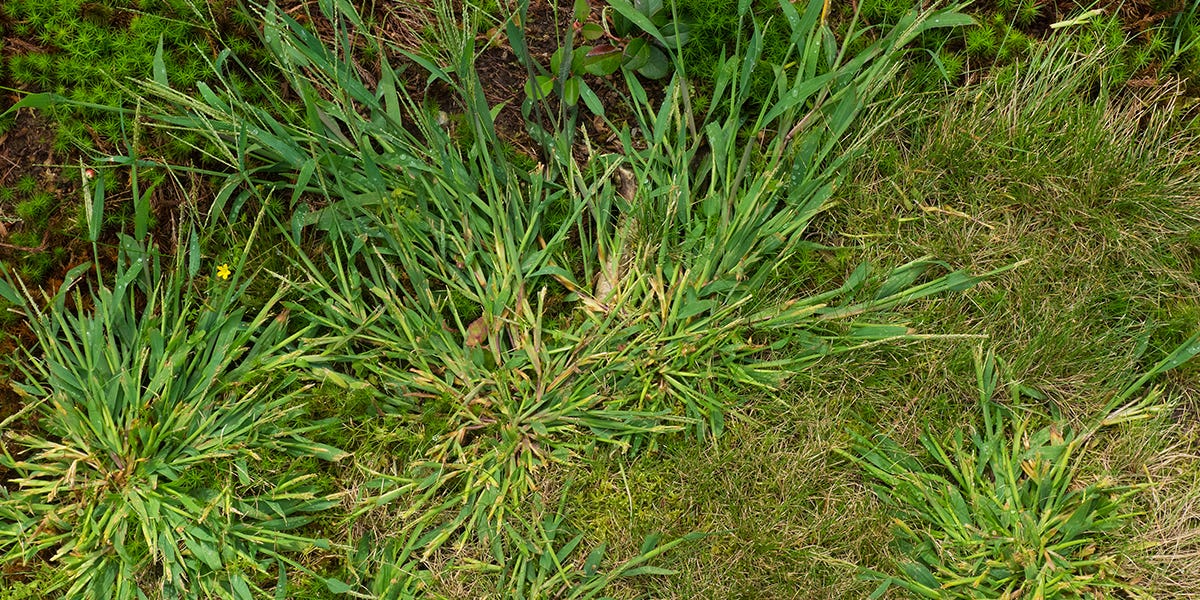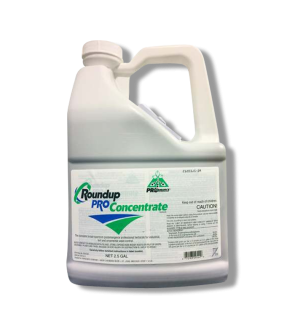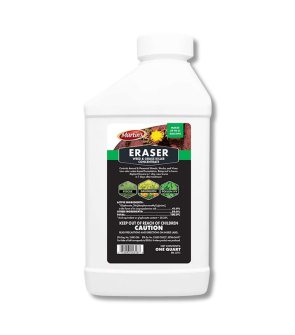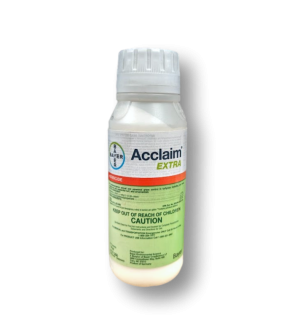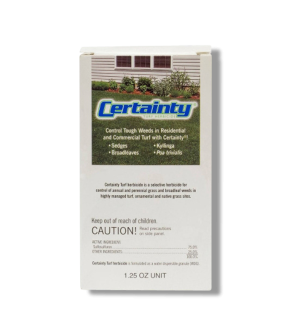Gain access to personalized product screening, the best pricing, rewards, and more!
Most Effective Products
How to Tell the Difference between Quackgrass, Fescue, and Crabgrass
When it comes to keeping and maintaining a healthy, beautiful lawn, grassy weeds can be a big obstacle. Invasive grassy weeds can stick out like a sore thumb and mess with the overall look of the lawn.
Some main culprits of grassy weeds include quackgrass, fescue, and crabgrass. What’s particularly frustrating about these grasses is that they look very similar, so much so that they can be confused or mistaken for each other.
This is problematic because when it comes to using herbicides, it’s essential to purchase and use herbicides labeled for a grassy weed. If your herbicide is labeled for Crabgrass and not for Fescue, but you have Fescue, you won’t get the desired result and will be set up for disappointment.
On this page, we’ll explain the difference between these three grassy weeds in depth so you will know which weed you are dealing with on your lawn. This will help you approach weed control the right way and make an informed decision about the herbicides you can use to combat these stubborn grasses.
Crabgrass

Almost every state in the country suffers from this fast-spreading invasive plant, which can be extremely difficult to remove without the intervention of a quality herbicide when established on your lawn.
If you’re wondering what Crabgrass looks like, it stands out because of how the blades stick out, like the legs of a crab, which is how they earned their name. This weed is so invasive and problematic where it grows that just the thought of encountering it on your lawn or knowing it has been established is enough to make a lawn owner cringe. With Crabgrass, the earlier you identify it and move into treating it, the better your chances of eliminating the grass from your lawn and saving yourself from having to deal with a hard-to-remove invasion.
Identifying Crabgrass can be an issue because of its different looks and adaptability to various environments and conditions. This makes it easier for Crabgrass to be mistaken for other weeds. Sometimes, the names Crabgrass, Devilgrass, Quackgrass, and Bermuda grass are used interchangeably among all those plants.
This thick, ugly, bladed grass in your lawn can be differentiated from similar grasses depending on when you are seeing it. If the time of the year is around June or June 15th, you do not have crabgrass. After June, if you think you have crabgrass, it’s usually a lime-green-colored grass that is much lighter in color. Crabgrass starts very small and can quickly grow much more significant.
Crabgrass seedheads resemble fingers on a hand, and the plant can wait for warmer days to sprout, usually after Spring weeding and mulching. High temperatures help the crabgrass go into overdrive, sending out long stems that grow so fast that they may flower and go to seed before you even notice them.
Quackgrass
Quackgrass is an annoying and tough-to-remove perennial grass that can show up on your lawn and frustrate you with its persistence. Some of its characteristics include thin, creeping underground rhizomes that spread and release chemicals that inhibit the growth of other plants so they can outcompete them and take over where they are not wanted.
You can identify quackgrass by their auricles. These little things wrap around the stem of the grass plant, almost grasping or hugging it. Right at the end of the leaf, which hooks up to the stem, Quackgrass has finger-like projections that indicate that you’re dealing with Quackgrass and not a different type of grass.
The tough thing about Quackgrass is that it’s a perennial weed, which means it has a deep root system with rhizomes. Usually, a patch will be there for many years, making it hard to control.
To eliminate quackgrass, you will need to inspect it regularly. If you spot it early, it will be much easier to control it and remove it altogether. The bad part about Quackgrass is that using normal weed killers will usually not work to remove this pesky weed.
Fescue
Fescue grass is notorious for its ability to thrive in areas with drought and shade. This makes it a desirable grassy plant because it is suitable for different conditions.
They are cool-season grasses, growing mainly in the transition zone of the United States and Canada.
Fescue grasses are desirably a turfgrass species because they can stay green year-round. Where many species will not grow, Fescue grasses can effectively fill this gap in growing conditions.
However, if fescue is growing where you do not want it to, we have some options that can effectively eliminate it. If you would rather not have fescue around, check out Certainty Turf Herbicide and RoundUp Pro Weed Killer.
Treatment
Hand-pulling any of these grasses is largely ineffective because you may pull what you think is the entire plant, but the stems that have rooted at the nodes remain in the soil because it is hard to get a clean pull. Secondary stems will sprout off the main stem, a foot or two away from the main crown. If left unattended, those pieces will grow and set seeds, bringing more pesky grassy weeds to your turf next Summer.
Herbicides are effective measures of controlling Crabgrass, Fescue, and Quackgrass. We have a number of great crabgrass killers in stock.
Our main recommendation for dealing with crabgrass is Acclaim Extra.
To get rid of fescue and quackgrass, we recommend Eraser 41% Glyphosate. Keep in mind it is non-selective, meaning it will kill any foliage it comes into contact with.
Step 1: Measure and Mix
You must first calculate the square footage of the area to be treated to determine how much product you need. To do this, measure and multiply the area length times the width (length x width = square footage).
To use Acclaim Extra as a spot treatment against crabgrass, mix 0.30 to 0.46 fl. oz. of product per gallon of water.
To use Eraser 41% Glyphosate, you will need to perform a spot treatment. Apply 2 1/2 oz. (5 Tbs) of product per gallon of water to treat 300 sq. ft.
Fill your sprayer halfway with the required amount of water, then add the selected herbicide product. Fill the sprayer with the remaining half of water and agitate it until the product is well-mixed. You are now ready to spray.
Step 2: Apply Herbicide to Weeds
Spot treat the areas where the Quackgrass, Crabgrass, or Fescue is growing, preferably with a sprayer on a fan nozzle spray setting for even coverage.
Most treated weeds usually show initial symptoms in 2-4 days and complete kill in 1-2 weeks with Eraser 41% Glyphosate. Hard-to-control weeds may require a second application if not completely dead in 4 weeks.
A second application can be done when 14 days have passed after the first application with Acclaim Extra.
Prevention
Once you have treated your lawn and removed the presence of Quackgrass, Fescue, or Crabgrass, you won't want it to return. Putting in place some preventative measures is best to keep your desired lawn turf healthy and thriving so these grassy weeds don't have room to grow.
- Remove dead grassy weed plants.
- Replant bare lawn spots with new grass seed.
- Apply a pre-emergent (such as Nitrophos Barricade) before the growing season.
- Set your lawnmower at the high end of the range, which is best for your grass type.
- Restrict excess fertilizing or overwatering.
- You are keeping your lawn healthy and lush.
Key Takeaways
- Quackgrass, Fescue, and Crabgrass are similar-looking weeds that can be confused with one another, but they have different methods for controlling them.
- Our go-to recommendation for treating crabgrass is Quinclorac 75 DF. For Quackgrass and Fescue, use Certainty Herbicide.
- Prevent the return of these grassy weeds after treatment with applications of Pre-Emergent, such as Nitrophos Barricade, and cultural practices that will result in a thick, lush lawn that chokes out weeds.






